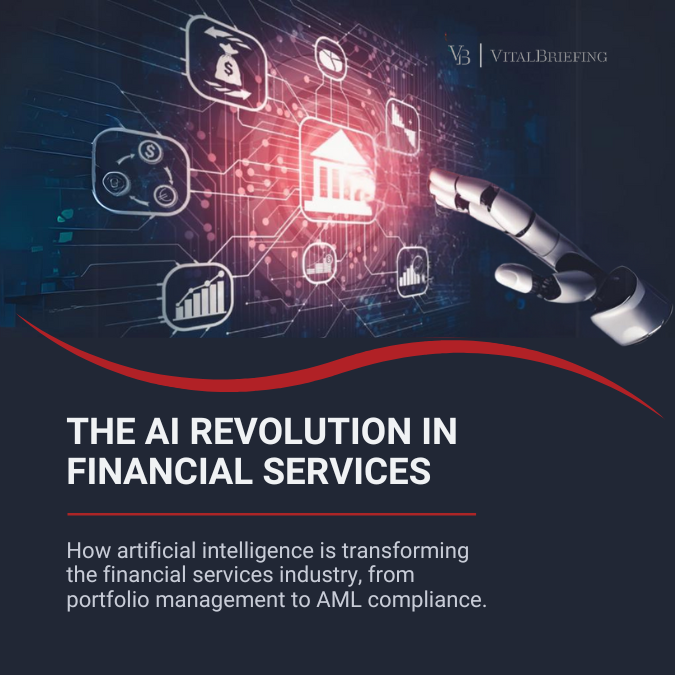Regulations Series – SFDR RTS – Ep.2
Introduction
The European Union’s Sustainable Finance Disclosure Regulation (SFDR), together with its Regulatory Technical Standards (RTS), stand at the heart of an ambitious endeavour to embed sustainable finance deeply into the financial system. By mandating transparency in how financial market participants and advisors incorporate environmental and social considerations into their investment and advisory practices, SFDR aims to enable a culture of openness. The European Supervisory Authorities’ (ESAs) latest revisions proposals to the RTS[1] aim to enhance clarity, boost transparency, and harmonise the presentation of information, thereby assisting investors in making well-informed investment choices.
However, while these proposed amendments are a positive step towards clarity, they also add another layer to the already complex regulatory framework that compliance officers in the financial sector must navigate. The increasing regulatory density calls for organisations to remain vigilant and well-prepared for the moment these RTS changes will be effective. As per the ESA’s final report, the intended simplification of disclosure requirements aims at refining the language and structure to make the Annexes more accessible, a response to the sector’s feedback[2] and supervisory insights. While enhancing the comprehensibility and user-friendliness of sustainable finance disclosures under SFDR, this initiative underscores the continuous evolution of regulatory standards and the imperative for companies to adapt swiftly to maintain compliance and capitalise on the opportunities presented by a more sustainable financial landscape.
Section 1 – Simplification, Clarity, and Extended Disclosures
Simplification and clarity
The proposed updates are particularly focused on simplifying Sections II through V of the SFDR RTS, which deal with the information disclosed before a contract is signed and during periodic reporting. A key innovation is the introduction of a “dashboard“[3] format, intended to be the opening page of the SFDR Annexes, summarising critical aspects such as the extent of sustainable investments, alignment with the Taxonomy regulation, principal adverse impact (PAI) scores, and greenhouse gas (GHG) emission reduction goals[4]. This dashboard aims to give a quick overview of a financial product’s sustainability characteristics. The ESAs have emphasized uniformity in presentation, mandating that the icons and colours in the dashboard should remain consistent, though adjustments to size and font for better readability are permitted[5]. Additionally, in preparation for the implementation of the European Single Access Point (ESAP), a move towards digitalisation is highlighted by the requirement for these disclosures to be available in a machine-readable XBRL format[6], improving the ease of data comparison and access.
Detailed disclosures and social impact indicators
The ESAs have refrained from making substantial changes to the “Do No Significant Harm” (DNSH) criteria. However, they advocate for more detailed disclosures, especially by specifying thresholds and/or criteria for PAI indicators on the websites of financial products[7]. This enhancement is aimed at providing deeper insights into how these products adhere to the DNSH principle. The revisions also introduce new compulsory and optional social PAI indicators, expanding the range of social impact considerations to include factors such as profits from non-compliant tax jurisdictions[8], involvement in the tobacco sector[9], employee remuneration, and share of investments in investee companies that have been involved in international standards violations[11]. These additions seek to offer a fuller picture of the social implications of financial products, ensuring alignment with wider sustainability reporting standards.
GHG emissions reduction targets
The suggested alterations include specific website disclosure obligations for financial products having GHG emission reduction as a characteristic of their sustainable investment objective[12]. The requirements differ for passively managed products[13], with special provisions for those following EU Climate Transition or Paris-Aligned Benchmarks. The expected disclosures should detail the targets set, the level of ambition, and the approaches taken to reach these goals. Regular reports are to reflect the progress towards these objectives, highlighting the effectiveness of the investment strategy and any modifications needed. This approach aims to equip investors with precise, actionable data on the environmental impact of their investments, fostering informed decision-making in the realm of sustainable finance.
Section 2: Challenges and Strategic Approaches
Compliance Challenges
With new social PAI indicators and GHG emissions reduction targets, compliance officers are faced with navigating through an expanded scope of reporting requirements. The introduction of machine-readable formats for disclosures further adds a layer of technical complexity, requiring organisations to adapt their data management and reporting systems to meet these new standards.
Strategic Compliance Approaches
To effectively adapt to these updated requirements, compliance officers can consider a multifaceted strategy that encompasses technological innovation, partnership with data providers, and internal process optimisation. Leveraging technology solutions can streamline data collection and reporting, ensuring compliance with the specific format requirements. Collaborating with third-party data providers can enhance the quality and comprehensiveness of sustainability data, facilitating more accurate and detailed disclosures.; lastly, enhancing internal data management processes is also crucial for maintaining data integrity and ensuring that reporting aligns with the newly proposed SFDR RTS requirements.
Practical Steps for Adaptation
Compliance teams can take several actionable steps to align their reporting processes with these enhanced requirements. These include conducting thorough reviews of current reporting frameworks to identify gaps, investing in training and development to enhance the team’s understanding of the new requirements, and engaging with investee companies to ensure alignment and transparency. Utilising standardised frameworks for sustainability reporting can also provide a consistent basis for disclosures, aiding in comparability and comprehension.
Conclusion
As the regulatory landscape continues to evolve, compliance officers must maintain a proactive stance towards regulatory developments, staying informed about ongoing changes and anticipating future amendments. Cultivating a culture of adaptability and proactive engagement within the organisation will be key to navigating the complexities of regulations’ continuous updates.
Featured image source : Midjourney
[1] See the Final Report on draft Regulatory Technical Standards on the review of PAI and financial product disclosures in the SFDR Delegated Regulation (4 December 2023)
[2] See p165: “The ESAs launched a Consultation Paper on 12 April 2023, with the period for comments ending on 4 July 2023. In total, the ESAs received 185 responses to the consultation. Respondents included industry participants and associations from all sectors, including consumer representative organisations, NGOs, the ESAs stakeholder groups, and public sector authorities and bodies.”
[3] See p17 Point 42.
[4] See p17 Point 43.
[5] See p26, amendment to Article 2.1. of the Commission Delegated Regulation (EU) 2022/1288.
[6] See p23 Recital 10.
[7] See p39: “in Article 39, point (a) is replaced by the following: ‘(a) how the indicators for adverse impacts in Table 1 of Annex I, and any relevant indicators in Tables 2 and 3 of that Annex, are taken into account, including the description of the thresholds or criteria used to determine that the sustainable investments do not significantly harm any environmental or social objectives and how they are determined’”
[8] See p5 point 5: “While mindful of the data challenge presented by respondents the ESAs have presented in the final report the following mandatory social indicators: a) ‘Amount of accumulated earnings in non-cooperative tax jurisdictions applying to investee companies where the total consolidated revenue on their balance sheet date for each of the last two consecutive financial years exceeds a total of EUR 750 M’ (new addition).”
[9] See p6: “Exposure to companies active in the cultivation and production of tobacco’ (new addition) was modified to ensure consistency with the language in the ESRS (specifically ESRS standard SBM-1). This addresses the uncertainty about what ‘involvement’ means, which was contained in the previous formulation of the indicator (‘exposure to companies involved in the cultivation and production of tobacco’).”
[10] See p6: “Employees earning less than an adequate wage’ (new addition) the ESAs consider this indicator an important one since it captures how a company compensate and rewards its workforce. The definition of adequate wage is taken from the ESRS S1-10 (Adequate wages) which includes the benchmark used for comparison with the lowest wage in the EEA and outside of the EEA.”
[11] See p6: “Share of investments in investee companies that have been involved in violations of the OECD Guidelines for Multinational Enterprises, the UN Guiding Principles, including the principles and 106 fundamental conventions identified in the ILO Declaration and the International Bill of Human Rights (modification).”
[12] See p40: Article 42a “Website section ‘GHG emissions reduction target’ for financial products that have sustainable investments as their objective”.
[13] See Article 42a.2.
_______________
For expert guidance on sustainable finance reporting and compliance, visit our website and explore the resources provided by our Leadership Circle Partners at LHoFT, your partners in navigating the complexities of digital operational resilience. Stay tuned for our forthcoming report on the advantages of leveraging Distributed Ledger Technology (DLT) for sustainable finance – a must-read for forward-thinking professionals.

